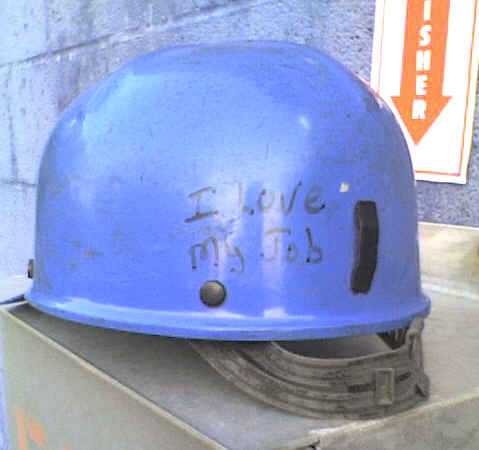Being Safe on the Job Site by Wearing Head Protection
By: The Working Man
There are several different types of headwear that are commonly
worn as personal protection equipment at work. Every PPE for the
head should have a label inside the hat that lists the
manufacturer, the class of the hat and the ANSI designation.
Let's talk about a few of the different types of PPE head
protective equipment:
Bump Caps
A bump cap is lighter than a hard hat. It fits closer and is good
primarily to protect your head from small bumps or cuts. The
advantage to wearing a bump cap rather than a hard hat or helmet
is that bump caps are inexpensive and more comfortable. However
they can't protect you adequately from falling or flying objects
and are not in compliance with most regulatory agencies standards
for jobs considered hazardous. They are fine, though, for working
in low buildings or under equipment where official Personal
Protective Equipment is not required or likely to be needed.
Hard Hats
It is important to know what type of hard hat, if any, is
required for your industry and job assignment, and to make sure
that the type you choose provides adequate protection from any
existing or potential hazards on the job site.

In US OSHA standards, hard hats are divided into three industrial
classes:
1. Class A hard hats provide resistance to impact and penetration
and limited voltage protection (up to 2,200 volts).
2. Class B hard hats provide the most protection against
electrical hazards. A Class B hard hat should provide high-
voltage shock and burn protection to up to 20,000 volts. It
should also protect from impact and penetration injuries from
flying or falling objects.
3. Class C hard hats are lighter and so more comfortable, and
protect from impact but not protection from electrical hazards.
Nearly all hard hats have a front peak to protect the face and a
rim around the sides to keep rainwater from dripping down your
neck. If the hard hat is made from fiberglass, it also will shed
rainwater without allowing large drops to form, which can help to
keep you dryer in the rain.
Hard hats may also have accessories such as a chin strap to make
sure the helmet stays on when you bend over, ear protectors
attached, headlights, visors, ventilating liners, and even
electronic communication tools.
Some job sites use color coded hard hats to make it easy to know
the job role of the wearer, such as yellow for workmen, white
for supervisors, red for safety inspectors, blue for technical
advisors, etc.
Workers in industries like oil well firefighting and lumbering,
hard hats made from space-age aluminum alloy are favorites,
although aluminum of course may not be worn where there are
electrical hazards.
Another benefit of a hard hat is that they seem to show up better
in the peripheral vision of other workers than safety colors or
other warning methods, so that may be an additional safety factor
on the job site.
The hard hat is probably the most common piece of personal
protection equipment, the foundation of your protection. Wear
yours in good health.
Back to Safety Accessories for Working Men